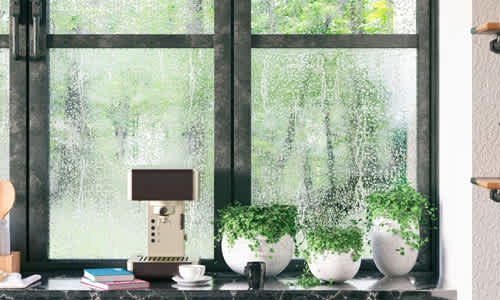How to prepare your home for weather

Insulate
While this may be one of the most obvious, having the right insulation can cut both your cooling and heating costs by up to half. Insulation can be in all areas of your house, from the ceiling, to the walls and the floors. You'll see insulation measured on an R-rating scale - the higher the rating, the better the insulation. Some common bulk insulation materials include:
- Glass wool and wool
- Cellulose fibre
- Polyester
- Polystyrene
You can lose 10-20% of your home's heat through your windows in cooler weather, and gain more than that (up to 35%) in heat in warmer weather. Investing in new windows that are tighter fitting and leak less air can make a difference to how much you spend on heating or cooling your home.
If you're renting and in a drafty building you can still absolutely save on heating and cooling by doing some temporary insulation on your windows (hello bubble wrap!) or getting (or making) a draft snake for your doors in cooler months, and in warmer months, making sure you plug up all the drafts and keep your windows shaded.
Gap Hunter
Many homes have drafts outside of the windows and doors, or smaller cracks around windows and doors that won't be answered by upgrading the window or adding a draft snake. You can have a professional come in and assess for leaks, or you can do a bit of DIY.
On a cool, windy day shut all doors, windows, fireplaces and flues then light a stick of incense and walk around areas where you suspect drafts. Watch the smoke - if it starts getting unsteady, there's likely an air leak for you to seal. There are lots of ways to seal gaps, one of the easiest being caulking and weatherstripping.
Ready the Roof
Your roof in the very fact that it protects your home, is one of the most exposed to weather. Getting your roof ready for rainier weather will help with a number of potential issues, including flooding. You'll want to:
- Clear drains and gutters
- Prune trees near the roof to help prevent debris
- Fix cracked, broken or missing tiles
- Assess for leaks
Clearing the gutters is an important start; it'll keep water from blocking up, overflowing and causing widespread water damage in all seasons. If you're lazy and you know it, once you clear the drains and gutters this time around, consider investing in gutter guards to help keep leaves and other debris from building up.
Signs of Mould
Mould is...not great. And often is one of the side effects of having a draft, as that is one of the ways damp can get in the house. Rainfall or snowfall and wintry weather can contribute to both mould and rising damp. And if bigger issues like rising damp happen, it can be an expensive exercise to fix.
A special consideration with mould is the level of humidity in your home - generally the more humid, the friendlier the environment to mould, especially if it's more than 70% humidity indoors. Circulating air with fans or opening windows when the weather permits is one way to help reduce opportunities for mould to grow.
Remember your outdoor areas in cooler months
Outdoor areas like the lawn, pool (if you're lucky enough to have one), patio and even your car all have things to do before the weather starts cooling down.
For your car, the long and short of it is: if you have a garage, use it for your car in cooler or stormier months. Hail, wind, falling branches, flooding - all this can cause sometimes massive damage to your car - so get it out of the elements.
With your pool, it'll likely be closed over in the cooler months, or at least for a good portion of it, so do a deep clean, including all the filters, check the pH is at the right level, and properly cover it if you're closing it.
Your lawn will likely be going into a bit of a hibernation mode, so treat it a bit like your pool. Do a deep clean, raking up all debris or fallen leaves. Before winter is also a good time to fertilise to make sure it stays healthy over the coming seasons.
Finally the fun bit - your patio! Just because it's cooler doesn't mean you should stop enjoying the outdoors. If it's covered, get an outdoor heater and enjoy to your heart's content.
Whatever the weather
Whichever of the 8 climates of Australia you live in, your home should protect you and keep you comfortable and safe. That means making sure it's happy and healthy as well: checking and maintaining your home for drafts, mould, and damp should happen regularly. Roofs and insulation are worth keeping an eye on, as both can fall into disrepair or become less effective over time.
Keep an eye on everything and take a few preventative measures every so often, and you've got a strong foundation to grow old under the same roof without much fuss.
Find out more about Home Renovation Loans today.
You may also like
News, tips and offers straight to your inbox.


